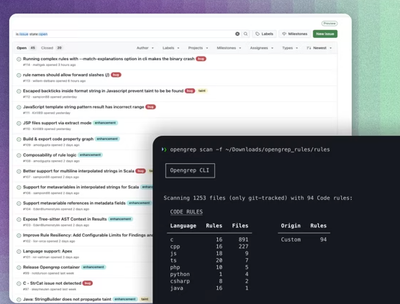
Research
Security News
Lazarus Strikes npm Again with New Wave of Malicious Packages
The Socket Research Team has discovered six new malicious npm packages linked to North Korea’s Lazarus Group, designed to steal credentials and deploy backdoors.
react-native-layout-primitives
Advanced tools
A set of primitive components built on top of View that allow you to supercharge your UI development
A collection of layout components based on View designed to supercharge your UI development process.

Layout is one of the most overlooked aspects of design systems. React Native provides the View component as the foundational
building block for user interfaces. This low-level primitive offers significant flexibility, including over 50 style properties.
However, when you have that many options it's a breeze to end up with messy code, characterized by:
StyleSheetText component also handling layout responsibilitiesThis library aims to introduce the right abstractions on top of View to address these issues,
establishing clear rules and guidelines supported by industry-leading experts:
These principles let you approach layout with the precision of a designer.
For those interested in exploring these concepts further, the article Rethinking Layout Practices provides an in-depth analysis.
npm install react-native-layout-primitives
import {
Stack,
Row,
AbsoluteStack,
Size,
} from 'react-native-layout-primitives';
const App = () => (
<Stack flex={1}>
<Row background="lightblue" padding={[Size.M, Size.L]} spacing={Size.M}>
<Row align="center" padding={Size.S}>
<Text>Foo</Text>
</Row>
<Stack justify="center" padding={Size.S} spacing={Size.Xs}>
<Text>Hello</Text>
<Text>World</Text>
</Stack>
<Stack width="100%" height={100} background="red" borderRadius={Size.S} />
</Row>
<Row flex={1} background="gray" padding={Size.Xl} spacing={Size.L}>
<Stack grow={1}>
<Button />
</Stack>
<Stack basis={120}>
<Button />
</Stack>
</Row>
<AbsoluteStack
width={100}
height={100}
bottom={Size.M}
right={Size.M}
background="black"
/>
</Stack>
);
This library provides three layout components and a valuable enum for grid-based spacing.
StackThe Stack component is essential for layout tasks, stacking children vertically by default, akin to the View component.
It extends the ViewProps interface, allowing it to accept all the properties available to View.
Additionally, it introduces the following properties to control layout:
// See the `Size` enum for possible values
type GridValue = Size | 0
interface StackProps extends ViewProps {
flex?: number;
direction?: FlexStyle['flexDirection'];
padding?:
| GridValue
| [GridValue]
| [GridValue, GridValue]
| [GridValue, GridValue, GridValue, GridValue];
spacing?: GridValue;
justify?: FlexStyle['justifyContent'];
align?: FlexStyle['alignItems'];
wrap?: FlexStyle['flexWrap'];
borderRadius?: number;
background?: string;
grow?: number;
shrink?: number;
basis?: number;
width?: number | DimensionValue;
height?: number | DimensionValue;
children?: React.ReactNode;
}
As a last resort, you can always use the style prop to pass custom styles.
RowA container that stacks children horizontally. It serves as syntactic sugar for a Stack with direction="row".
By default, it wraps them into multiple lines and offers the same properties as the Stack component.
AbsoluteStackA container with absolute positioning. It serves as syntactic sugar for Stack with position="absolute".
In addition to all Stack properties, it introduces four new ones: top, right, bottom, and left.
SizeSize is a practical numerical enum that adopts the t-shirt sizing convention. This approach is preferred over using strings, like
m or s, because it enables mathematical operations in specific scenarios, such as:
XXl or XXXl.Size.M + Size.Xs.enum Size {
None = 0,
Xs = 4,
S = 8,
M = 16,
L = 24,
Xl = 32,
}
You can play with the Expo example app in the example folder. To run it, follow these steps:
cd example
npm install
npm start
Alternatively, you can run the example app in the browser by visiting this snack link.
See the contributing guide to learn how to contribute to the repository and the development workflow.
MIT
Made with create-react-native-library
FAQs
A set of primitive components built on top of View that allow you to supercharge your UI development
The npm package react-native-layout-primitives receives a total of 0 weekly downloads. As such, react-native-layout-primitives popularity was classified as not popular.
We found that react-native-layout-primitives demonstrated a healthy version release cadence and project activity because the last version was released less than a year ago. It has 1 open source maintainer collaborating on the project.
Did you know?

Socket for GitHub automatically highlights issues in each pull request and monitors the health of all your open source dependencies. Discover the contents of your packages and block harmful activity before you install or update your dependencies.

Research
Security News
The Socket Research Team has discovered six new malicious npm packages linked to North Korea’s Lazarus Group, designed to steal credentials and deploy backdoors.

Security News
Socket CEO Feross Aboukhadijeh discusses the open web, open source security, and how Socket tackles software supply chain attacks on The Pair Program podcast.

Security News
Opengrep continues building momentum with the alpha release of its Playground tool, demonstrating the project's rapid evolution just two months after its initial launch.